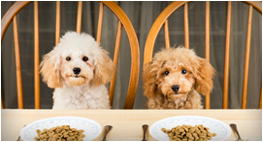How to overcome your dog's fear of vacuum cleaners
"Take cover! What are you doing near that thing, it's DANGEROUS!" Your dog tries to warn you from the corner of the room but all you can hear over the hum of the vacuum is, "Ruufff ruff grrRRRR yap yap YAP GRRRR". You turn off the vacuum cleaner and glare at Rover who looks at you meekly, suddenly silent. If you have a dog like Rover, don't give up! With some careful training, you can put some serenity back into your cleaning (or at least make it a less despicable task).
Many pets react when it's time to vacuum the floors, either by running away and hiding or by barking and howling incessantly. These are signs of anxiety and if not managed properly, can develop into a phobia. When your pet is experiencing anxiety towards an object or event, it's important to remember that they are scared and are not acting out due to disobedience.
We have put together a simple six step program to help acclimatise your dog to the presence of the scary thing and show them it is not a threat. Replace the fear with positive associations by using treats, praise, toys and pats. Never use negative reinforcement like raising your voice or forcing them closer to the vacuum.

Step 1. Have them in the same room as the vacuum cleaner while it is turned off. When they approach the vacuum cleaner, give them a treat. Let them sniff the vacuum and encourage them to make contact with it.
Step 2. Have a friend use the vacuum cleaner in an adjacent room. Give lots of praise and treats before any sign of distress are shown. Have them grow used to the noise and associate it with positive thoughts.
Step 3. In the largest room of your house, sit with your dog on one side and get a friend or family member to stand on the other side with the vacuum cleaner. When they turn it on, feed your dog some treats and give them lots of pats. Associate the rewards with the vacuum cleaner.
Step 4. Turn the vacuum off, immediately stop feeding treats and giving pats. Let your dog inspect the vacuum while it is off. Every time the vacuum is turned on, feed the treats while you give them lots of pats and praise.
Step 5. Slowly reduce the distance between dog and vacuum while repeating step 4.
Step 6. Wean off the treats while the vacuum is turned on. Instead, only give them the treats if they are calm and quiet.
Managing your pet's fears will not only make blow drying your hair and vacuuming the lounge room more tolerable, it can help improve their health. Stress physically affects your pet and may be detrimental long term. Always use positive encouragement and refrain from scolding your pet during the conditioning as this can reinforce their fear. If your dog is particularly fearful of the vacuum, an Adaptil diffuser can be a useful aid to calm them further.
Suggested for you

























